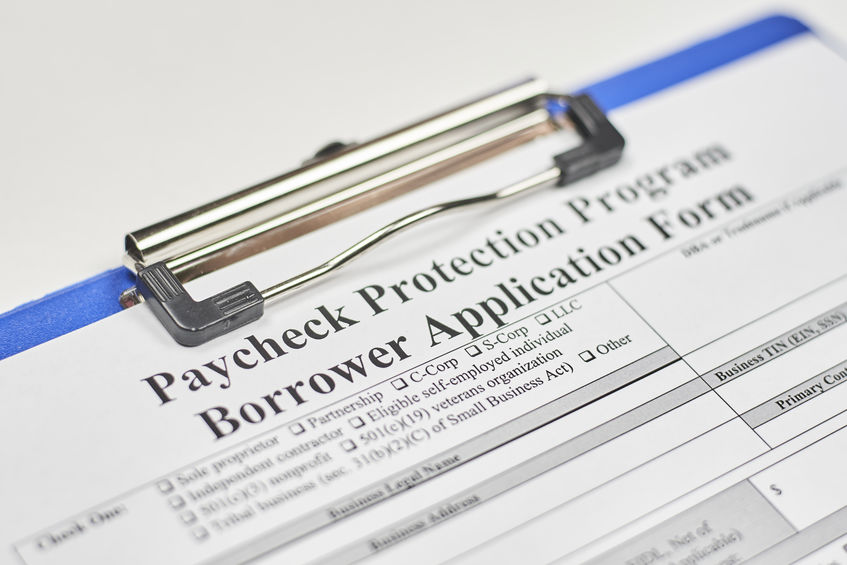Following passage of the Covid-19 Relief Package in December 2020, the U.S. Small Business Administration (SBA) reopened the Paycheck Protection Program (PPP) for new PPP loan requests from eligible businesses that did not obtain a loan in the initial round. In addition, some eligible businesses that currently have a PPP loan, or had one previously, can get another PPP loan; these are called “Second Draw Loans.”
Earlier this week, as part of its effort to reach smaller lenders as well as underserved and minority-owned small businesses, SBA granted dedicated PPP loan portal access to Community Financial Institutions, such as Community Development Financial Institutions (CDFIs), Minority Depository Institutions, and other similar institutions. In addition, the SBA first opened the PPP program to eligible lenders with $1 billion or less in assets. On Tuesday, January 19, the U.S. Department of the Treasury opened the portal to all participating PPP lenders.
An overview of the Second Draw Loans is provided here. In addition, Second Draw Loans are guided by SBA’s Interim Final Rule on Second Draw Loans issued on January 14, 2021, and they generally are guaranteed by SBA under the same terms, conditions, and processes as First Draw Loans. Below is a summary of the notable changes and takeaways.
Eligibility
PPP Second Draw Loans are generally available to companies with fewer than 300 employees that have already used or will use the full amount already provided in their initial round of PPP, and that can demonstrate at least a 25% reduction in gross receipts between comparable quarters in 2019 and 2020. The PPP program has also been updated for the Second Draw to now include eligibility for certain housing cooperatives, news organizations, section 501(c)(6) organizations, and Economic Injury Disaster Loan recipients.
Of particular importance to Tribal governments with gaming facilities: As with the First Draw Loans, the rule on Second Draw Loans clarifies that a business otherwise eligible for a Second Draw Loan is not rendered ineligible due to its receipt of legal gaming revenues, and 13 C.F.R. §120.110(g) is inapplicable to Second Draw Loans.
Amounts Available
The maximum for Second Draw Loans is the lesser of two and a half months of the borrower’s average monthly payroll costs or $2 million; actual loan amounts will be based on an applicant’s payroll. Second-time PPP borrowers generally will be eligible to borrow an amount equal to 2.5 times their average monthly payroll costs. However, food service and accommodation industries – hotels and restaurants – are eligible for loans equal to 3.5 times their average monthly payroll.
Eligible Expenses
As with the First Draw Loans, borrowers are still required to spend at least 60% of the funds on payroll over a covered period of either 8 or 24 weeks to receive full forgiveness. The remaining 40% may be used on eligible costs, including certain mortgage expenses, rent and utility payments. Moreover, the list of eligible non-payroll expenses has been expanded for Second Draw Loans to include four new categories, including:
- Costs for personal protective equipment and adaptive investments that help a PPP loan recipient comply with federal and/or health and safety guidelines related to COVID-19.
- Outlays for software, cloud computing, human resources, and accounting needs.
- Any spending not covered by insurance that is related to property damage due to public disturbances that occurred during 2020.
- Spending to suppliers that covered costs essential to the business operations at the time the outlay occurred. For instance, restaurants’ purchases of perishable goods can now qualify.
Tax Changes
The legislation and regulations also include two major tax changes for PPP recipients. An important change outlined in the new regulation: Forgiven PPP loans will be completely tax-free, and any usually tax-deductible business expenses paid with PPP loans also will continue to be deductible under the 2021 Consolidated Appropriations Act.
Another major change in the coronavirus relief legislation concerns how PPP loans interact with the Employee Retention Tax Credit (ERTC). Originally, businesses that received PPP loans were prohibited from using the ERTC to reduce their tax burden. This has been changed so businesses can take advantage of both PPP and the ERTC in 2020 and 2021.
PPP guidance and resources are available at www.sba.gov/ppp and www.treasury.gov/cares.
###

